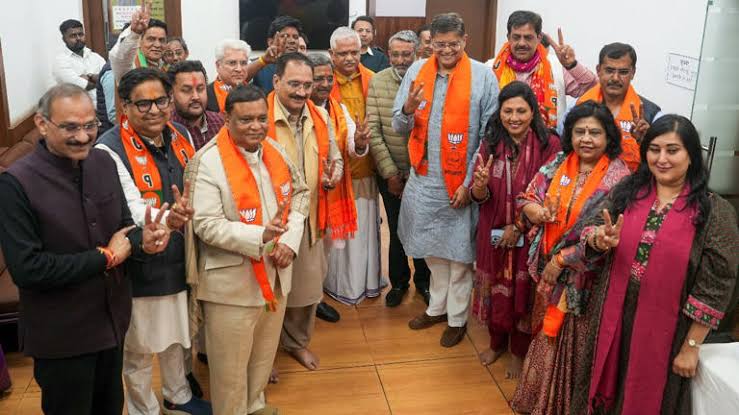
On June 11, 2025, Prime Minister Narendra Modi hosted a significant meeting at his official residence, 7 Lok Kalyan Marg, with all 48 Bharatiya Janata Party (BJP) Members of the Legislative Assembly (MLAs) from Delhi, all seven of its Members of Parliament (MPs), and Chief Minister Rekha Gupta. This gathering marked the first such interaction since the BJP’s sweeping victory in the 2025 Delhi Assembly elections, which ended nearly three decades of non-BJP rule in the city.
The over three-hour-long meeting focused on strategies to enhance the quality of life for Delhi’s residents. Discussions revolved around urban infrastructure, pollution control, public transport, sanitation, and the implementation of the ‘Clean Delhi, Green Delhi’ initiative. Prime Minister Modi emphasized the importance of coordinated governance between the Centre and the Delhi government, advocating for a “triple-engine” model—Centre, state, and local bodies working in unison.
Chief Minister Rekha Gupta highlighted her administration’s priority on making Delhi cleaner and greener, announcing initiatives such as planting 7 million saplings under the “Ek Ped Maa Ke Naam 2.0” campaign and improving waste management using modern technology. She also pledged to bring schoolchildren to the National War Memorial to inspire patriotism. The Prime Minister shared his vision for Delhi’s growth, which Gupta believes will provide direction and momentum for future projects.
The meeting also served as a review of the first 100 days of Chief Minister Rekha Gupta’s administration. In a post on X, Prime Minister Modi shared, “Interacted with Delhi BJP MPs, MLAs and other leaders. We had extensive discussions on ways to improve the quality of life for the people of Delhi.” He also posted photographs from the meeting, which included BJP national general secretary (Organisation) BL Santhosh and Delhi BJP president Virendra Sachdeva.
This gathering underscored the BJP’s renewed focus on governance and development in Delhi, with an emphasis on environmental sustainability, infrastructure improvement, and collaborative leadership.
